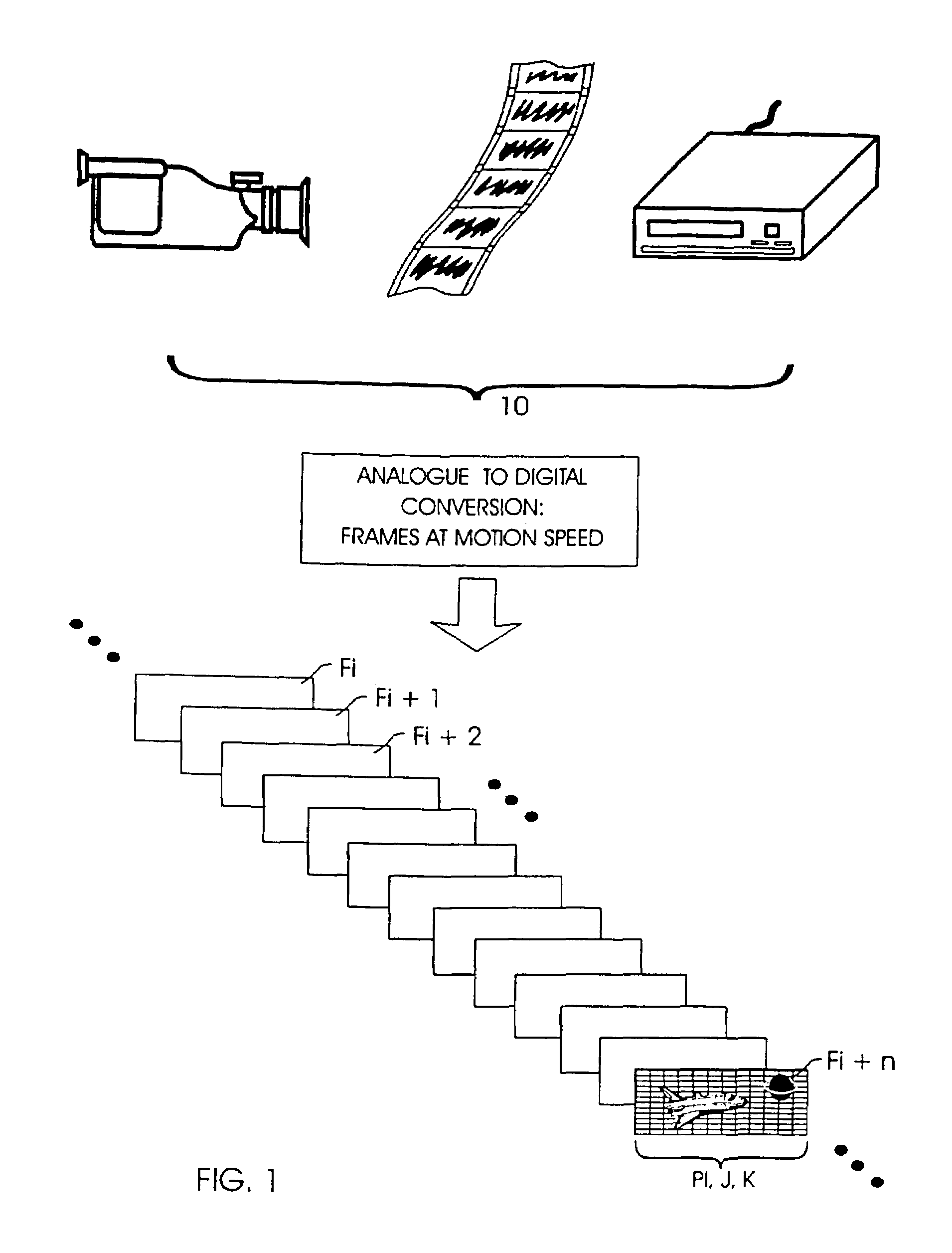System for converting TV content to interactive TV game program operated with a standard remote control and TV set-top box
a technology of interactive tv and game program, which is applied in the field can solve the problems of slow acceptance of interactive tv systems by the general public, inability to convert tv content to interactive tv game programs, and inability to achieve active viewer navigation and direction, so as to achieve the effect of increasing the exposure to advertisers' products
- Summary
- Abstract
- Description
- Claims
- Application Information
AI Technical Summary
Benefits of technology
Problems solved by technology
Method used
Image
Examples
Embodiment Construction
[0041]The present invention can be used with any system for enabling a TV program to be operated interactively with the user. For purposes of this invention, it is desirable to use an interactive TV enablement system that can be operated using standard types of TV set-top boxes and standard types of remote control units that have cursors directional keys and function keys that can be assigned interactive functions such as “Select” or “Enter”. For example, one such type of interactive TV enablement system using standard set-top boxes and remote controls that has been deployed for commercial use is the Wink™ system, offered by Wink Communications, Inc., of Alameda, Calif., now owned by Open TV Corp., of the British Virgin Islands. A preferred TV enablement system for use in the present invention is as described in our U.S. Pat. Nos. 5,708,845 and 6,496,981, and U.S. patent application Ser. No. 09 / 815,020, for converting existing TV program content to interactive TV programs by definin...
PUM
 Login to View More
Login to View More Abstract
Description
Claims
Application Information
 Login to View More
Login to View More - R&D
- Intellectual Property
- Life Sciences
- Materials
- Tech Scout
- Unparalleled Data Quality
- Higher Quality Content
- 60% Fewer Hallucinations
Browse by: Latest US Patents, China's latest patents, Technical Efficacy Thesaurus, Application Domain, Technology Topic, Popular Technical Reports.
© 2025 PatSnap. All rights reserved.Legal|Privacy policy|Modern Slavery Act Transparency Statement|Sitemap|About US| Contact US: help@patsnap.com



